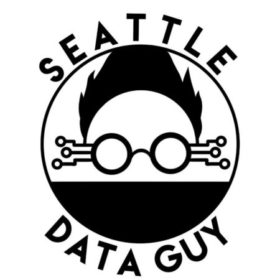Chapter 01: The Expansion of the Distributed Data Architecture
Nearly a quarter of data professionals in a recent survey shared that their organization is prioritizing modernization of its data architecture with concepts like data mesh in 2024. For those focused on modernizing their data-driven initiatives, architectures like the data mesh promise secure, self-service data use that can scale alongside their growing business.
As the data mesh transitions from theory to implementation in today’s evolving data ecosystems, what impact might it have on individuals, organizations, and industries at large?
Data mesh will become more business-driven than IT-driven. As AI continues to increase the appetite for more data distributed everywhere, business professionals will continue to explore conceptual solutions like data mesh in order to enable data democratization.
But as money gets tighter and investments become more targeted, IT leaders must shift the way they look at data mesh adoption to turn it from a buzz into a reality.
They must focus more on the milestones they are able to hit to show business value, instead of being solely fixated on reaching the perfect state of implementation.
Data products in data mesh architectures need to be kept protected as close to the source as possible. Customers are not looking solely at the balance of data privacy and security versus ensuring usability anymore. They are also looking at how to scale those operations with hundreds, if not thousands, of data products that need to operate together to create value for data consumers.
Both customers and organizations at large demand scalable, cross-cloud privacy, security, and governance solutions that provide near real-time protection of the data products they are creating. In general, data governance in the data mesh will need more focus. Customers need to know the data they possess in order to apply the appropriate policies and protective measures. Once their data is discovered, classified, and tagged, it can be protected as close to the source as possible. Then, these data resources can be shared for consumption or for the creation of upstream data products.

The adoption of a decentralized data mesh approach, including a shift to domain-focused data products, adds pressure to all teams to create value and deliver ROI. To unlock your data team’s most effective ROI, you must balance compliant, responsible data management practices with “offensive” data product innovation & data sharing opportunities. This is no small feat.
The highest value data is also the most heavily regulated, and ransomware attacks are reaching record levels. The teams that will be the most successful are those who take an approach that achieves zero trust security without compromising data product innovation.

Data mesh designs will become more widely used across industries as more businesses adopt the decentralized approach to data management and governance. It is expected that collaboration and data integration between various areas will continue to advance. Data sharing and integration will become more frictionless as domain-focused teams improve their ability to produce reusable and interoperable data products. This will allow enterprises to get more value out of their data assets.
Since data mesh architectures are decentralized, organizations will probably explore and develop new data governance frameworks. In the context of domain teams, this will require setting specific principles and standards for data ownership, quality, and security.
These architectures’ growing popularity has already had a substantial impact on jobs, companies, and entire sectors. In the future, usage is likely to grow, resulting in even more advancements in data sharing, governance standards, infrastructure, and cultural shifts toward data empowerment.
The burgeoning adoption of data mesh architectures is revolutionizing the landscape of data governance, particularly within the Health Care and Life Sciences (HCLS) sector. As a leader in data governance consulting, I’ve observed this paradigm shift not only reshaping our organizational strategies, but also redefining the industry’s approach to data interoperability and accessibility.
In the HCLS domain, where the sanctity and security of data are paramount, the data mesh model has been a catalyst for innovation. It has enabled a more democratized data ecosystem, where decentralized nodes operate under a unified governance framework, fostering agility and compliance simultaneously. This is particularly resonant as we witness a significant migration to cloud platforms with Snowflake at the helm, facilitating a seamless transition for even the most cloud-averse customers.
The impact of this transition is profound. By leveraging data mesh in conjunction with Snowflake’s capabilities, we’re not just enhancing data governance – we’re elevating the quality of healthcare delivery. The ability to serve up critical data with unprecedented efficiency is transforming clinical outcomes, optimizing internal operations, and ultimately, enriching patient experiences.
Looking ahead to the next 12 months, I anticipate the influence of data mesh to grow exponentially. As we continue to refine these architectures, the emphasis will be on harnessing their potential to drive more personalized, predictive, and preventative healthcare solutions. The data mesh isn’t just a technical infrastructure; it’s the backbone of a more informed, agile, and patient-centric HCLS industry.


Data mesh is a concept that addresses one of the biggest grievances of many business teams – the time it takes to derive decisions from data is too long. Data engineering teams are overloaded and unable to respond in a timely manner. Data mesh solves this issue by making the domain teams accountable for delivering data products that meet business goals. This is a big cultural shift as the responsibility (and skills) shift across organizations. Data mesh requires a federated governance model and makes data security not just the CISO’s problem, but everyone’s responsibility.
Domain staff are not IT experts, and hence they expect the IT teams to develop and deploy “self-service infrastructure” that the business teams can easily consume. The goal is to ensure that business teams spend more time on the business outcomes and less on technology. A standardized platform also ensures consistent policy enforcement. Data products are extraordinary in the sense that they can be measured and lead to higher team productivity. They also reduce risks and optimize IT spend.
The growing adoption of data fabric architectures has had a significant impact on my role, organization, and industry. In the past, data was often siloed within individual departments or systems, making it difficult to access and analyze. However, with the advent of data fabric architectures, curated data is now available across the organization, enabling greater collaboration and more informed decision-making. I have seen a shift from traditional data processing and analysis to more modern data management and integration techniques. My organization has also had to adapt its infrastructure and technology to support the growing volume and complexity of data, which has led to investments in cloud-based storage, unified
data security, and processing solutions.
In the next 12 months, I expect to see further advancements in data fabric architectures, particularly in the areas of data security and privacy. As data becomes increasingly critical to organizational decision-making, it will be essential to ensure that data is protected from unauthorized access and misuse.
Here are some ways it has influenced our landscape:
- Improved Data Integration: Data fabric architectures enable the seamless integration of disparate data sources from various systems and locations into a unified platform. This enhances data accessibility and allows for more comprehensive analysis and insights.
- Enhanced Agility and Scalability: Increased agility in managing our data ecosystem. Data consumers can quickly adapt to changing business requirements by scaling up or down resources as needed, leading to improved efficiency.
- Simplified & Unified Data Governance: With a centralized approach to managing data across different environments (on-premises, cloud), we established consistent governance policies for security, compliance, privacy regulations, etc., ensuring better control over sensitive information.
- Accelerated Decision-Making: By providing real-time access to integrated data through self-service analytics tools and visualization capabilities, we can make faster and more informed decisions based on accurate insights derived from diverse datasets.


A lot of companies are figuring out the gap between “what we have” and “what is best” when it comes to the future of cloud data. Some may still be in the early stages of their cloud migration, and they need to get to a place where their systems in the cloud and those on-premises can be seamlessly integrated with one another. How can they manage to pull this all together?
My view on data mesh is that the companies who need it to achieve this cloud data balance will find this architecture naturally. I’ve had people tell me that they want to use data mesh, and their data team is only 5 people – that’s already very well centralized. So I ask, well, are you going to change the entire framework for your organization and how you treat data?
When I worked at Facebook, we didn’t even think to call it a data mesh. It’s just how our architecture operated, because you’ve got a thousand data engineers, and you’re not going to have one governance team that manages all of them. You’re gonna try to build the best data infrastructure possible for your organization, and then everyone else is hopefully capable of using it. And so I think people are going to figure out where it fits for them. And I think those who can benefit from the data mesh paradigm are going to find and implement it naturally.








